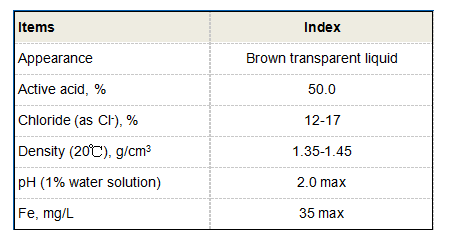Development and Applications of Ethylene Diamine Tetra Methylene Phosphonic Acid in Industry
Understanding Ethylene Diamine Tetra Methylene Phosphonic Acid (EDTMPA)
Ethylene diamine tetra methylene phosphonic acid (EDTMPA) is a phosphonate compound that has garnered significant attention in various fields, particularly in the chemical and pharmaceutical industries. This compound possesses unique properties that make it useful for various applications, ranging from water treatment to agricultural and medical uses. In this article, we will explore the structure, properties, synthesis, and applications of EDTMPA, providing a comprehensive overview of this versatile compound.
Chemical Structure and Properties
EDTMPA is classified as a phosphonic acid, which means it contains a phosphorus atom bonded to four oxygen atoms and a carbon chain that includes ethylene diamine. The structural formula of EDTMPA can be represented as follows
\[ \text{C}_6\text{H}_{16}\text{N}_2\text{O}_7\text{P} \]
The molecule has two primary functional groups the phosphonic acid group (-PO₃H₂) and the ethylene diamine moiety (-NH₂-CH₂-CH₂-NH₂). These functional groups contribute to the compound's high chelating ability, which refers to the capacity of certain substances to bind metal ions. This property makes EDTMPA an effective agent for immobilizing heavy metals and preventing scale formation in water systems.
EDTMPA is a colorless to pale yellow liquid at room temperature. It is soluble in water and exhibits good stability at a variety of pH levels. The stability of EDTMPA under different conditions enhances its applicability in various industries.
Synthesis of EDTMPA
The synthesis of EDTMPA can be accomplished through a multi-step reaction involving ethylene diamine and phosphorus trichloride, followed by hydrolysis. The process begins with the formation of ethylene diamine phosphonic acid, which is subsequently treated with a methylene diphosphonic acid derivative. Careful control of reaction conditions, such as temperature and pH, is critical to obtaining high yields and purity of EDTMPA.
One common approach includes the reaction of ethylene diamine with phosphonic acid derivatives in an alkaline medium. The reaction typically requires a controlled environment to ensure the formation of the desired phosphonate compound while minimizing byproducts that can affect yield.
ethylene diamine tetra methylene phosphonic acid

Applications of EDTMPA
EDTMPA's chelating ability makes it particularly valuable in several applications, including
1. Water Treatment EDTMPA is used in water treatment processes to prevent scale formation and corrosion in industrial water systems. Its ability to bind metal ions helps to sequester hardness ions such as calcium and magnesium, preventing the buildup of insoluble salts.
2. Agriculture In agriculture, EDTMPA finds application as a chelating agent for micronutrients. It enhances the availability of trace elements like zinc, iron, and manganese in soils, thus promoting better plant growth and crop yields. By chelating these essential nutrients, EDTMPA ensures they are readily absorbed by plants.
3. Pharmaceuticals EDTMPA is also explored in the pharmaceutical industry for developing medication for various diseases. Its properties allow for the formulation of stable drug complexes and targeted delivery systems. Moreover, it has been investigated for potential applications in diagnostic imaging due to its ability to bind to radionuclides.
4. Cosmetics The cosmetic industry utilizes EDTMPA as a stabilizing agent in formulations. It can prevent the degradation of active ingredients, thus prolonging the shelf life of cosmetic products.
5. Research and Development In scientific research, EDTMPA is employed in various chemical reactions and studies due to its ability to form stable complexes with transition metals. This property is essential in catalysis and material science.
Conclusion
Ethylene diamine tetra methylene phosphonic acid (EDTMPA) is a unique compound with distinctive properties that lend it to a variety of applications across multiple industries. Its exceptional ability to chelate metal ions positions it as a vital agent in water treatment, agriculture, pharmaceuticals, and more. As research continues, the potential applications of EDTMPA may expand further, leading to innovative solutions in environmental management, agriculture, health, and beyond. Understanding the intricacies of EDTMPA not only highlights its importance in current applications but also its potential for future advancements.
-
2-Phosphonobutane-1,2,4-Tricarboxylic Acid: Scale & CorrosionNewsAug.29,2025
-
Premium Isothiazolinones | Broad-Spectrum Biocidal SolutionsNewsAug.28,2025
-
LK-319 Special Scale And Corrosion Inhibitor For Steel Plants: Advanced Solutions for Industrial Water SystemsNewsAug.22,2025
-
Flocculant Water Treatment: Essential Chemical Solutions for Purification ProcessesNewsAug.22,2025
-
Isothiazolinones: Versatile Microbial Control Agents for Industrial and Consumer ApplicationsNewsAug.22,2025
-
Scale Inhibitor: Key Solutions for Water System Scale PreventionNewsAug.22,2025





